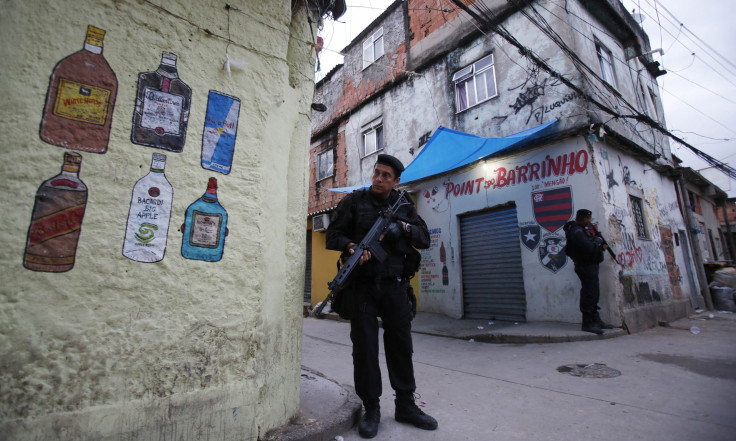Brazil Flushes Out Drug Gangs In Rio's Slums

Brazilian security forces have occupied two slums in Rio de Janeiro in an ongoing effort to clean up the city’s most crime-ridden areas before the 2014 World Cup and 2016 Olympic Games take place.
A combined force of some 1,500 marines and paramilitary police entered the Jacarezinho and Manguinho favelas in northern Rio in a predawn raid Sunday, though there was virtually no resistance aside from flaming barricades in the roads as most of the local drug gangs had retreated in advance.
The Brazilian government has launched a series of raids, claiming to have established control in some 30 favelas since operations began in 2008.
In order to reduce violence, authorities have begun announcing raids days in advance. Once a neighborhood is secured, military forces leave while a “police pacification unit” is put in place. More than 6,700 police are patrolling across the targeted favelas, Al-Jazeera reported.
The government’s plan is to secure 40 favelas before the World Cup begins, though there are around 1,000 densely populated favelas where one-fifth of the city’s population of more than 6 million resides.
Critics argue that the drug gangs will simply move into other neighborhoods after being pushed out of their former territories.
Nevertheless, authorities have announced that drugs and weapons have been confiscated from areas targeted by security forces. More than 130 pounds (60 kilograms) of cocaine were seized in Sunday’s raid, the Telegraph reported.
While encounters with gang members have become less frequent, police said that five suspected drug dealers were killed in a raid on Saturday, CNN reported. This contrasts with a prior raid of the Alemao favela in 2010, when more than 30 suspected gang members were killed.
Rio’s favelas have long been controlled by drug traffickers and are notorious for criminal activity and drug abuse. Brazil is currently the world’s largest consumer of crack cocaine and second-largest consumer of cocaine after the U.S., the BBC reported, though it also remains a key transit point for drugs trafficking into Mexico and eventually the U.S.
© Copyright IBTimes 2025. All rights reserved.





















